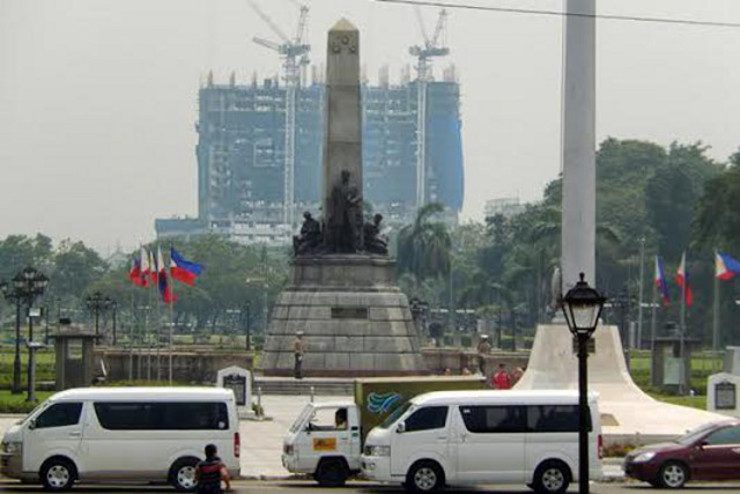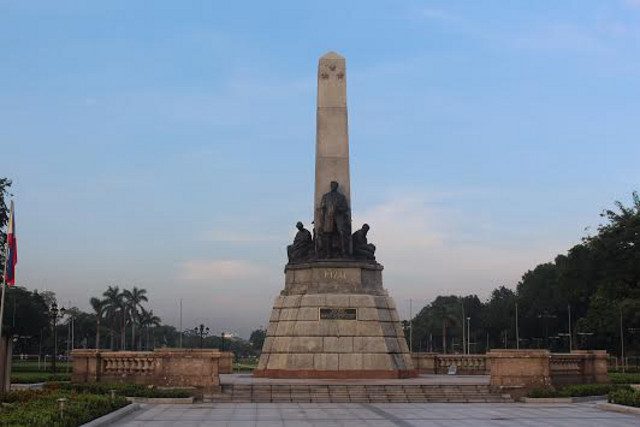SUMMARY
This is AI generated summarization, which may have errors. For context, always refer to the full article.

MANILA, Philippines – If photos of Torre de Manila condominium obstructing the Rizal Monument sightline are indeed photoshopped, as alleged by developer DMCI Homes, will the firm’s officials be willing to take a selfie by the shrine to prove it?
This was the challenge posed by cultural activist Carlos Celdran after DMCI Homes claimed that circulating photos of the unfinished condominium were edited to show how it ruined the view of the monument from the Roxas Boulevard side.
The condominium project – already 19 floors tall but the subject of a Senate investigation and a court case that could lead to its demolition – has been nicknamed “pambansang photobomb” (the country’s worst photo spoiler) by historical conservationists.
“I challenge the DMCI board or any executive to a selfie at the Rizal Monument itself to prove it’s not photoshopped. Anytime,” Celdran told Rappler on Tuesday, September 16.
In a statement sent to media on Tuesday, DMCI Homes said the obstruction caused by their building was an exaggeration.
“Our project is almost one kilometer away from the monument and even a bit on the right side. But to grab public attention, some parties took to the unethical approach of virtually juxtaposing pictures of our project right behind the monument.
“In effect, their claim of ‘photobomb’ was photoshopped,” said the company.
To prove this, DMCI Homes also sent photos of the Rizal Monument to show how, when taken from certain angles, Torre de Manila is nowhere in sight.

“One may stand near the monument and choose certain angles to avoid or, at the very least, minimize the building’s intrusion,” reads a caption in the press release.
While Celdran cannot speak for all those who photographed and spread photos of Torre de Manila, he said photos of the building where it appears unusually larger than in other photos were achieved by angling and not photoshop.
“The further you back up from Rizal Monument, the bigger and uglier Torre de Manila looks in a photo. It’s basic perspective,” said Celdran.
‘Legally solid’
DMCI Homes reiterated previous statements that it obtained all the necessary documents for them to begin construction.
“Our zoning permit, issued on June 19, 2012, specifically allows us to build 97,549 square meters. This was confirmed when the building permit was issued the following month showing that we were cleared to build a 49-storey project,” the company said in a statement on Tuesday.
Aside from permits issued by Manila City Hall back when Alfredo Lim was the mayor, the controversial project was also “cleared” by the National Historical Commission of the Philippines (NHCP).
NHCP had stated before that Torre de Manila was outside the boundaries of the Luneta Park of which the shrine is a centerpiece.
The National Parks Development Committee (NPDC), despite concerns it would mar the view of the shrine, said it could not interfere because its authority did not extend beyond the park.
DMCI Homes downplayed complaints that the tower threatens the visual integrity of the National Hero’s monument.
Such concerns, said the real estate giant, have “nothing to do with the law.”
Still ‘bad faith’
But Celdran said the permits issued to DMCI Homes do not spare the company from allegations of “bad faith.”
“Kindly show us the clearance and exemption for violation of floor-to-area ratio and dated in 2012, back when they started construction. That will clear them of bad faith,” he told Rappler.
Senator Pia Cayetano, after two Senate hearings on Torre de Manila, concluded that DMCI Homes was a “developer in bad faith” because it had proceeded with construction despite resolutions from the Manila City Council saying the issuance of permits to them were hastily done.
In January 2014, when Torre de Manila was already several floors high, the Manila City Council finally cleared construction after DMCI Homes agreed to certain conditions.
The conditions include building a sewage treatment facility to deal with the overburdened utilities in the area, planting lines of trees, and observance of green building standards.
Torre de Manila violated Manila’s Zoning Ordinance, which states that buildings in its location should only have a floor-to-area ratio of 4 because of the limited capacity of utlities. But Torre de Manila’s floor-to-area ratio is 7.79.
Last September 12, a group filed a petition with the Supreme Court to order the building demolished. – Rappler.com
Add a comment
How does this make you feel?
There are no comments yet. Add your comment to start the conversation.